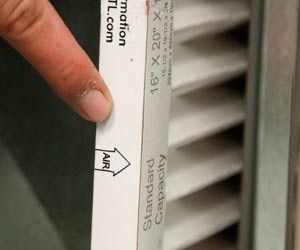Welcome to our comprehensive guide on residential furnace repairs in Olathe, Kansas. We hope to be your go-to resource for navigating the challenges of maintaining a reliable heating system in the heart of the Midwest.
As temperatures plummet during the winter months, ensuring your furnace operates at peak efficiency becomes essential for a cozy and comfortable home. In this blog post, we’ll delve into common furnace issues that Olathe residents often encounter. We explore DIY checks to troubleshoot problems, and offer insights into when it’s time to call in professional help.
Whether you’re a homeowner seeking preventative maintenance tips or grappling with a sudden heating breakdown, our guide aims to empower you with the knowledge to keep your furnace running smoothly in the face of Kansas’s chilly weather.
What are the most common furnace problems?
In Olathe, residents often encounter common furnace problems that can disrupt their home heating systems.
1. One prevalent issue is a malfunctioning thermostat, which can lead to inconsistent heating or no heat at all.
2. Faulty ignitors or pilot lights are also frequent culprits, causing the furnace to fail to ignite and produce warmth.
3. Another common problem is dirty or clogged filters, hindering proper airflow and reducing the efficiency of the heating system.
4. Additionally, issues with the blower motor, such as wear and tear or electrical failures, may result in inadequate circulation of heated air throughout the home.

Olathe’s cold winters emphasize the importance of addressing these common furnace problems promptly to ensure residents stay warm and comfortable in their homes. Regular maintenance and timely repairs can help prevent these issues and keep residential heating systems running smoothly during the chilly seasons.
Regularly replacing or cleaning the air filter is a simple but crucial maintenance task that can prevent such issues and help keep the furnace operating efficiently. It’s recommended to check and replace the air filter at least every few months, especially during peak heating seasons.
What can do yourself if your furnace is not working?
If your furnace is not working, there are several checks you can perform yourself before calling a professional. Keep in mind that if you’re not comfortable or familiar with these tasks, it’s always advisable to seek assistance from a qualified technician. Here are some furnace checks you can do:
- Thermostat Settings: Ensure that the thermostat is set to the desired temperature and mode (heating). Replace the thermostat batteries if needed.
- Power Supply: Check if the furnace is receiving power. Make sure the circuit breaker for the furnace is not tripped, and verify that the furnace switch is turned on.
- Air Filter: Inspect the air filter and replace it if it’s dirty or clogged. A dirty filter can restrict airflow and lead to various issues.
- Fuel Supply: For gas furnaces, confirm that the gas supply is turned on. If you suspect a gas leak, leave your home immediately and contact the gas company.
- Vents and Registers: Make sure all vents and registers are open and unobstructed. Blocked vents can impede airflow.
- Condensate Drain: If your furnace has a condensate drain, ensure it is not clogged. A blocked drain can cause the furnace to shut down.
- Inspect Flue and Exhaust Pipe: Check for any blockages or obstructions in the flue or exhaust pipe. Blocked vents can be a safety hazard.
If, after performing these checks, your furnace still doesn’t work, it’s recommended to contact a licensed HVAC professional to diagnose and address the issue. Safety is paramount when dealing with heating systems, so exercise caution and seek professional help if needed.
What is the typical lifespan of a furnace?
The typical lifespan of a furnace varies depending on factors such as the type of furnace, the quality of its installation, and how well it’s maintained. On average, a gas furnace can last anywhere from 15 to 30 years. However, if a furnace is never maintained we have seen them needing major repairs or even replacement after just 10 years.
Regular maintenance, timely repairs, and the quality of installation play crucial roles in extending a furnace’s lifespan. If a furnace is well-maintained and experiences minimal wear and tear, it is more likely to operate efficiently for a longer duration.
Additionally, factors like energy efficiency and technological advancements may prompt homeowners to upgrade their furnaces before the end of their expected lifespan.
